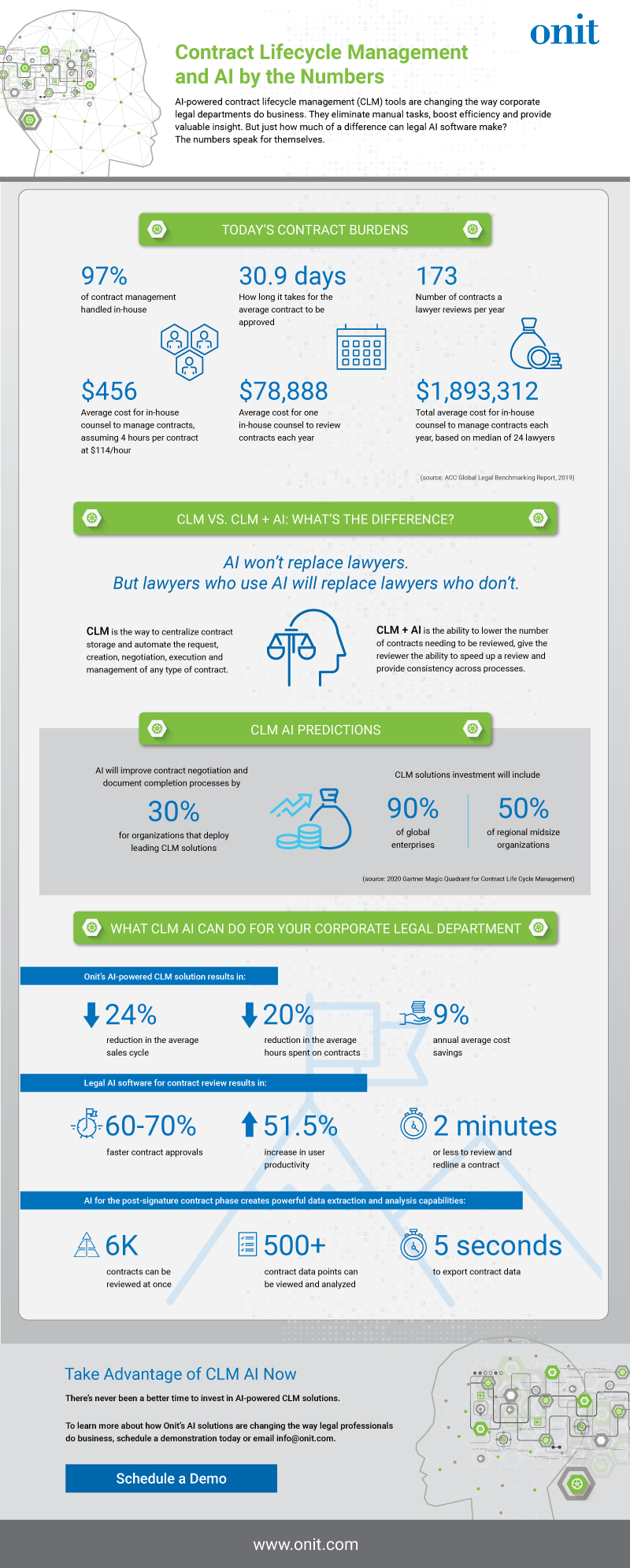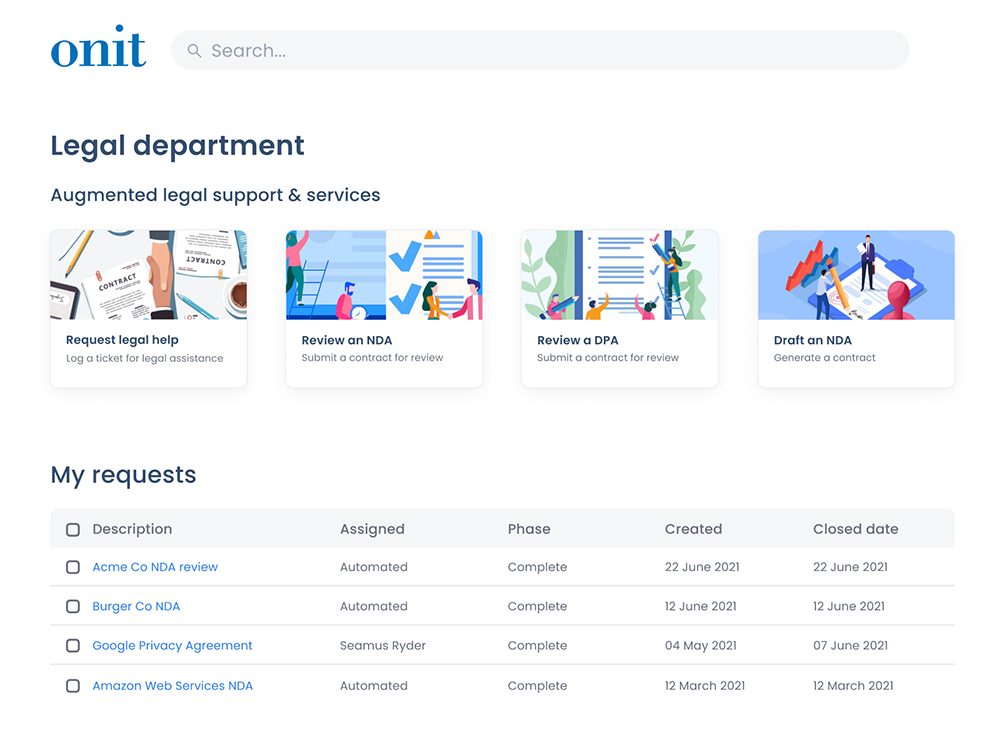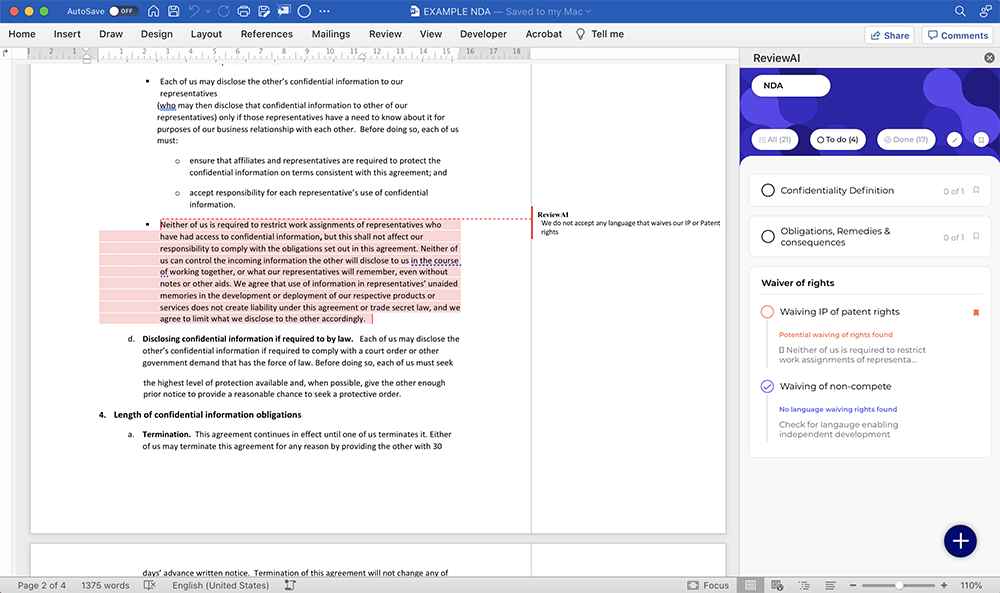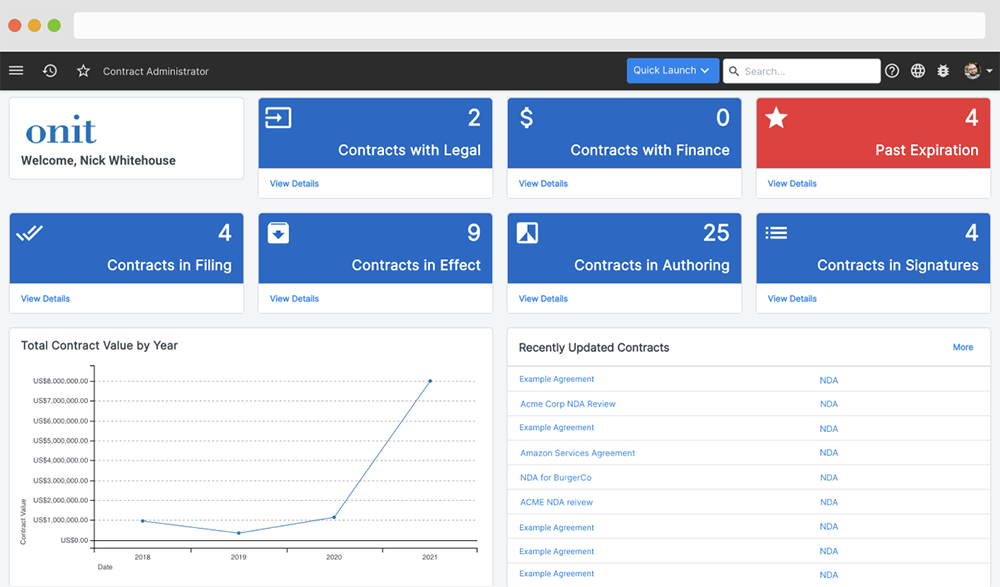
Sales, procurement, and legal departments are increasingly turning to AI, automation, and other technologies to ease the burden of routine tasks, increase efficiencies, and better collaborate with other departments. Contract Lifecycle Management (CLM) tools can be a cornerstone of this technological revolution.
Why Companies Need Contract Lifecycle Management (CLM) Tools
Contract management challenges vary by department and role. However, many contract stakeholders desire a quick review process and visibility into contract activity.
Sales departments know that contract delays mean delays in revenue-generating opportunities. They want to avoid “black box syndrome” when sending contracts for legal review; this makes options such as self-service and AI-assisted first pass review especially attractive.
Procurement must effectively enable spend owners to maximize suppliers’ value and meet their objectives. For example, with contracts, they want to balance the needs of multiple stakeholders, manage contracts centrally, decrease risk, and reconcile spending against the budget.
Legal has several concerns, including lack of oversight on current contracts, balancing speed and review, and losing revenue when add-ons, upgrades, and renewals are missed.
Contract attorneys need to be able to consistently and efficiently compare third-party contracts to company contract standards and extract key provisions from large amounts of contracts to manage their company’s risks. They also need to quickly track critical dates and locate contracts in a searchable repository.
Legal operations professionals face similar but often more practical contract management challenges that speak to their specialization. These challenges include accelerating turnaround time, reducing costs, and providing attorneys with tools to help them manage contracts, internal legal requests, and overall risks.
What Are CLM Tools?
CLM tools streamline the contracting process from start to finish, bringing benefits to both the pre-signature and post-signature phases of contracting and creating self-service opportunities for stakeholders. As a result, CLM tools can reduce the average sales cycle by 24% and lower the average hours spent on contracts by 20%.
They use technologies such as AI and automation to accelerate the review process and manage contracts from capture and creation, through negotiations and approvals, to execution and post-execution management. This end-to-end solution improves consistency, saves time, and surfaces critical insights allowing proactive, informed decision-making. For example, automation, AI, and CLM can reduce end-to-end NDA processing time by 70%.
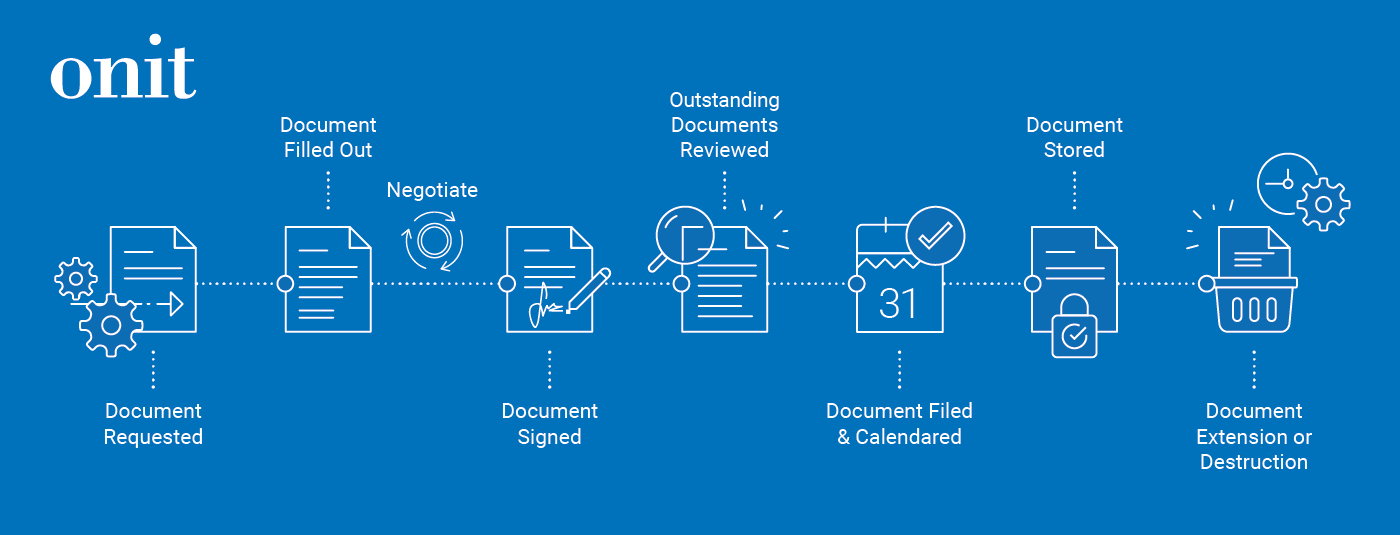
A typical manual contract lifecycle can lead to delays, errors, high costs, and increased risk.
How do CLM tools accomplish this? Here are some examples of how they work.
How do CLM tools accomplish this? An ideal CLM tool provides:
- A central repository serves as a single source for all contracts and associated documentation, eliminating the need to search for information.
- Partner and client self-service, providing an easy-to-use portal to request, submit, or create contracts. You can see an example of one here for NDA automation.
- Microsoft Word integration meeting people “where they work” so they can draft, pre-screen, edit, and review in their preferred word processing tool while maintaining a seamless and secure link to CLM.
- Conditional contract generation that automatically generates a contract with appropriate clauses based on a robust rules engine and contract metadata.
- The ability to securely manage and maintain contract clauses and templates in the cloud from a centralized location.
- Automatic version control and easy-to-use check-in, and check-out functionality.
- Obligation management allows for controlling and measuring tasks or milestones related to compliance.
- Automated risk mitigation identifies clauses and terms that add risk to your agreement to support negotiations and re-negotiations.
- Routing and approval automation that can be quickly built, deployed and updated as needed.
- Proactive alerts such as notifications or reminders sent by the technology as the contract progresses through its lifecycle.
What Are CLM Tools Powered by AI?
In addition to the features mentioned above, the most effective CLM tools harness the power of artificial intelligence (AI). This includes a combination of AI techniques such as natural language processing, deep learning and proprietary algorithms that build and release fully-formed AI models. Here’s how AI supercharges contract management:
- Pretrained AI – A CLM tool should come pre-trained on datasets that allow you to analyze NDAs, master service agreements, purchase agreements, third-party contract reviews, and more straight out of the box. The pre-trained AI will continue to learn to identify and enforce your organization’s unique contracting preferences over time.
- First-pass review and redlining – AI handles first-pass review quickly and accurately, analyzing the document, comparing it to the corporate playbook, and providing redlines for suggested changes. For example, if AI finds an indemnity clause or waiver that shouldn’t be in an NDA, it can redline that section. Or, if it doesn’t see a standard clause used in an NDA, the AI can automatically add it. So how do you start this process? It’s as easy as emailing the contract or submitting it through a user-friendly intake form.
- Smart checklists – AI goes beyond alerts with configurable checklists to create dynamic lists of concrete, task-based actions generated from your company playbook.
- Repapering – AI amends and redlines contract details and critical terms to comply with regulatory changes or M&A activities.
- Contract abstraction – AI identifies critical legal clauses, terms, and details in documents for easy analysis and syncing with your CLM.
- Audit compliance – CLM and AI automate large-scale legal contract reviews when regulatory changes occur and export relevant details in notes and reports.
- Due diligence – Automating batch review contracts for routine legal, due diligence frees up valuable resources.
- Legacy contract migration – AI analyzes and extracts legacy contract metadata, including critical dates, terms, and clauses, to assist in importing.
How to Learn More about CLM Tools
Here are some more resources that answer the question, “What are CLM tools?”
- Quick Start Guide: AI-Powered CLM Tool for Corporate Legal, Procurement and Sales
- White Paper: What to Expect from a Contract Lifecycle Management Solution
- Webinar: Future-Proofing Surges in Contract Activity
- Webinar: The Future of Contracting: CLM + AI Transformation at Lenovo
- Blog post: CLM Process Flow: Making Contracting Easier for Legal
- Blog post: Four Mistakes to Avoid When Considering a Contract Management Platform
- Blog post: How Does A Contract Management System with AI Improve the Way Lawyers Work? Let’s Look at the Numbers. [Infographic]
Schedule a demonstration with us today to learn more about how CLM from Onit can benefit your legal department and other departments across your organization.









